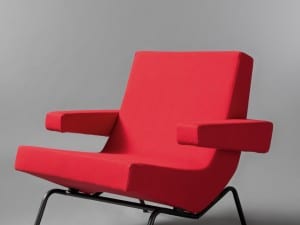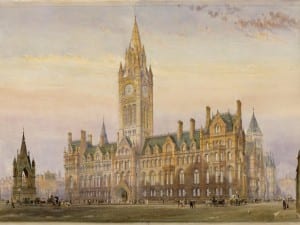Four decades worth of British punk feminist work are presented in Linder Sterling’s Paris retrospective. Photography, collage, music and video works have been assembled under the exhibition title Femme/Objet, a troubling conflation of woman and commodity that lies, subverted for positive ends, at the heart of Linder’s practice: “I have always treated myself as a found object”, she says.
For Linder, this means seeing oneself as a thing ripe for experimentation and adaptation to a changing roster of contexts and roles. It is an artistic strategy made explicit to viewers: Linder’s quote is reproduced and spotlit in bilingual wall text placed above three photographic self-portraits in which the artist tries out three incarnations of glamorous goth style. The first and largest portrait encountered here is nonetheless disquieting: Hiding but still not knowing (1981-2010) sees Linder’s mouth and nose wrapped in transparent material simultaneously evoking traditional bridal wear and some kind of packaging – cling film, perhaps. The look is as alluring as it is sinister; boldly made-up eyes stare defiantly, but the transparent veil also suffocates; renders feminine beauty mute. The adjacent portrait is a smaller photomontage, Untitled (1981), in which sight is undermined by a cutlery collage covering the eyes. No sensory deprivation occurs in the third portrait, indeed the opposite takes place as red lips are inflated to ludicrous proportions. Dated 1979, the latter also appears at the exhibition entrance, repeated to Warholian excess.
Not everything is so darkly glamorous here. The exhibition is cut into contrasting halves: black walls and floors provide the backdrop for documentation of Linder’s beginnings in 1970s Manchester and her subsequent role in the 1980s band Ludus. Work from the 2000s is installed in a brighter, sickly sweet setting comprising pastel pink, lilac and orange walls, gauzy curtains and neon inscriptions: “ANATOMY IS NOT DESTINY”, we read. The stark change in the gallery environment effectively suggests that the gender campaign has paid off; that a literally brighter horizon has been reached. Undoubtedly this is true; “In the late 1970s gay clubs were the only sanctuaries when you were wearing bondage (…) Everywhere else you went in Manchester you were open to ridicule and occasional violence”, Linder recalls in a text accompanying two small scale series of photos taken at the popular crossdressing club Dickens.
The sickly nature of the bright backdrop to the 2000s might alternatively represent ironic over-identification with a present that could yet be much more accepting of alternative identities. If Femme/Objet makes one thing clear it is that the magazine and pornography industry has changed little in the past forty years: photocollage imagery sourced throughout this period evidences how men and women have consistently been asked to identify with the conformist and idealised images that Linder loves to deconstruct. The iron-headed woman featured on the cover of the Buzzcock’s single Orgasm Addict is depressingly timeless. Videos such as Forgetful Green (2010, directed by Tim Walker) show greater gender fluidity in a utopian dreamscape to which we have little access.
Lizzie Homersham
Linder: Femme/Objet, MAM, Paris, until 21 April.
Credits
All images courtesy of Musee D’Art Moderne, Paris.
1. Linder, Oh Grateful Colours, Bright Looks VI, 2009 ©Linder.
2. Linder, Oh Grateful Colours, Bright Looks II, 2009 ©Linder.
3. Linder, Sans titre, 1979 ©Linder.





